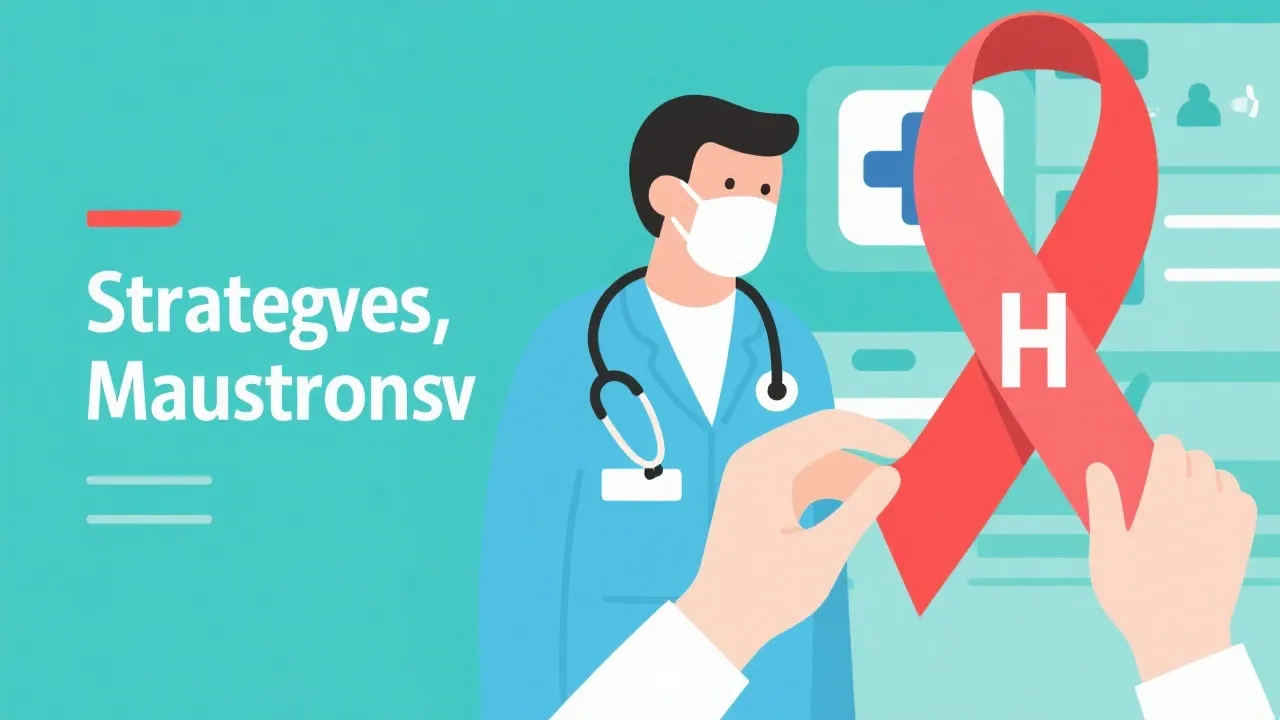This article delves into effective strategies used in the control and management of HIV/AIDS. The complexity of HIV/AIDS demands innovative approaches to health management. This guide explores clinical strategies, public health policies, and community-level interventions integral to managing this global health challenge. We aim to provide a comprehensive analysis of various tools and methodologies that have proven successful.

HIV/AIDS remains one of the very significant public health challenges globally. The Human Immunodeficiency Virus (HIV) targets the immune system, gradually impairing the body's ability to fight infections and diseases. If not effectively managed, this can lead to Acquired Immunodeficiency Syndrome (AIDS), a potentially fatal condition. Consequently, strategic approaches in the control and management of HIV/AIDS are imperative for reducing its spread and impact. Understanding the complexity of the HIV/AIDS epidemic is crucial, as it involves various factors including biological, socioeconomic, and political dimensions. An intricate web of interactions influences the epidemic, necessitating multifaceted interventions for effective management.
Effective management of HIV/AIDS relies on a multifaceted approach integrating clinical, behavioral, and societal interventions. Here are some of the primary strategies utilized:
| Strategy | Main Feature | Effectiveness |
|---|---|---|
| Antiretroviral Therapy (ART) | Continuous medication to suppress viral load | Highly effective in managing HIV progression and virtually eliminating transmission with undetectable levels |
| Pre-exposure Prophylaxis (PrEP) | Proactive daily medication to prevent infection | Reduces risk of infection by over 90% when taken consistently; effectiveness rises with adherence |
| Behavioral Interventions | Education and promotion of safe practices | Effective with widespread and consistent application, especially tailored to high-risk groups |
| Community Engagement | Involving local populations in health interventions | Increases program reach and efficacy by ensuring cultural relevance and responsiveness |
| Harm Reduction Strategies | Implementing practical measures for safety in drug use | Reduces HIV transmission among drug users and links them to essential healthcare services |
| Policy and Legal Frameworks | Laws and policies supporting equitable healthcare access | Essential for reducing stigma and ensuring nondiscriminatory practices in care |
The global fight against HIV/AIDS is ongoing, with substantial progress made over the decades. The successful strategies, such as ART and PrEP, highlight the importance of scientific research, policy-making, and community involvement. Continuous efforts are required to address the evolving challenges posed by this disease, aiming for a future where HIV/AIDS is no longer a public health threat. As we strengthen our commitment to combatting the epidemic, focusing on the social determinants of health that contribute to vulnerability will be vital. By addressing disparities in healthcare access and investing in community-based solutions, we can strive for an inclusive response to HIV that considers the interplay of biological, social, and economic factors.
Additionally, advocacy must expand beyond immediate treatment and prevention strategies. It is critical to actively engage in global discussions on health funding, ensuring that resources are allocated towards research for a potential cure and improved treatment methods. Innovative strategies that harness technology should be further integrated into existing frameworks to maximize outreach to various populations, especially those that are underserved.
Finally, as we build on the successes of the past, commitment to global partnerships will be essential in the ongoing fight against HIV/AIDS. Collaboration across borders, combining resources, expertise, and shared knowledge will lead to more significant breakthroughs in understanding and combating HIV/AIDS. The landscape of HIV/AIDS continues to evolve, and with it, our strategies must adapt accordingly. By bringing together diverse perspectives and expertise, we can create a robust future where communities are educated, informed, and equipped to combat HIV/AIDS effectively.
In conclusion, the complexity of HIV/AIDS requires a comprehensive response that acknowledges the integrative nature of health, community, policy, and individual actions. Every stakeholder, from policymakers to healthcare providers to individuals, plays a critical role in tackling this epidemic. Moving forward, we must foster a culture of openness and acceptance, enabling effective interventions that cater to the unique needs of all affected. We have made considerable progress, yet challenges remain. Addressing these challenges collectively will pave the way for a healthier, more equitable future in the fight against HIV/AIDS.
Explore the Tranquil Bliss of Idyllic Rural Retreats

Ultimate Countdown: The 20 Very Legendary Gaming Consoles Ever!

Affordable Full Mouth Dental Implants Near You

Discovering Springdale Estates

Embark on Effortless Adventures: Unveiling the Top in Adventures Made Easy Outdoor Equipment

Unlock the Full Potential of Your RAM 1500: Master the Art of Efficient Towing!

Dodge Ram: Redefining the Future of Full-Size Trucks with Unmatched Power and Innovation

Get New Phones Without Plans Easily

Smart Strategies to Slash Costs on Your Roof Replacement Endeavor
